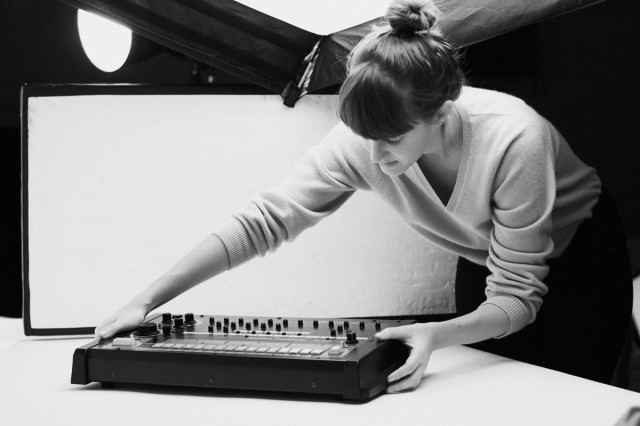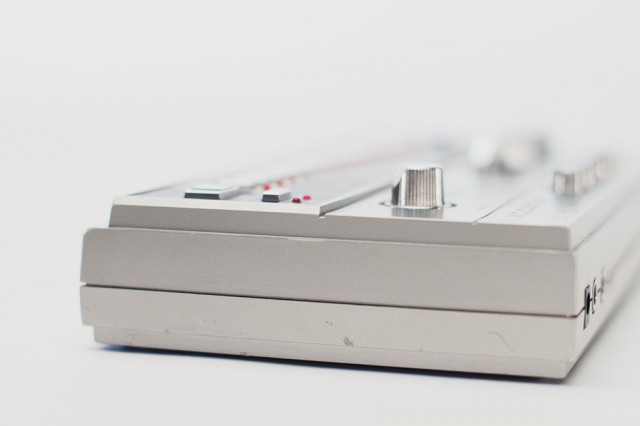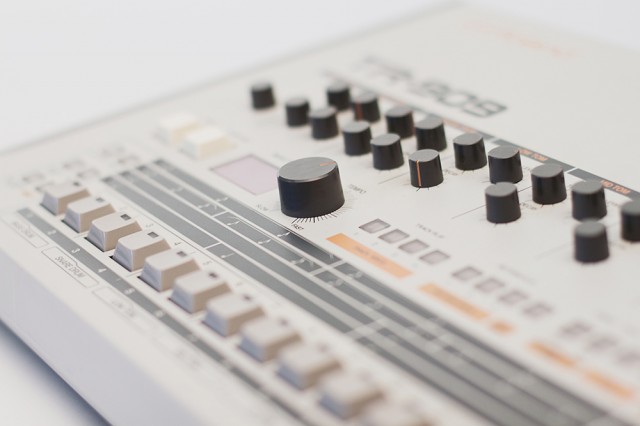Blah, blah, the influence of the Roland drum machines, their musical/cultural significance… I’ve actually written those words before, so I’ll skip doing it this time.
In case the YouTube subtitles aren’t working, let me translate the German from the making-of video below:
“We decided to make a giant bit of pr0n for you because these old Roland boxes are so beautiful. Try to keep our finely-printed pages from sticking together.”
Actually, the still above looks like something out of Blow-Up< – Antonioni for the studio set?
Visually, the book is the work of photographer / illustrator Tabita Hub (these are her gorgeous images here). Based on what I’ve seen so far, this already looks like the prettiest photo record of Roland’s legacy made yet.
In case you are “reading this for the articles,” though, you won’t be disappointed. There’s the requisite name-dropping: Robert Hood, Modeselektor, Egyptian Lover, Legowelt, Jeff Mills. But just as importantly, author Michal Matlak, aka Analog Roland Orchestra, promises some credibility to the historical treatment. Florian Anwander, author of the excellent Synthesizer, joins in. And the bookshop is opening online only on the 11th of May.
The quality of the imagery is already looking like some of the best we’ve seen anywhere.
I suppose my only real complaint here is questioning whether we need another book about Roland (or Moog, or any of the other names we see again and again). So, if Tabita Hub or someone reading there wants to join me in some documentation of weird DIY projects or forgotten Soviet instruments, get in touch.
And by “complain,” of course, I mean both “I’d love to do that project so please do it with me,” and “please, Electronic Beats, ship me a copy of this to change my mind.” Sorry, just in the interest of disclosure. I still think that Roland System 100 is one of the best-looking models of anything, ever, and the Space Echo somehow looks cooler now than ever. That is all.
http://theanalogrolandorchestra.de/R-is-for-Roland
Photos: Tabita Hub.


